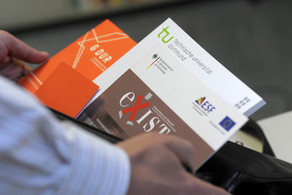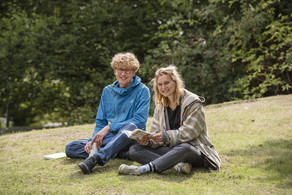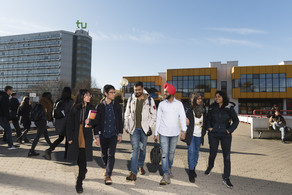Statistics – The Key to Artificial Intelligence
- Artificial Intelligence
- mundo

The mathematician Prof. Nadja Klein conducts research at the interface of statistics and machine learning. She develops models for researchers all over the world, which are used to better understand the Australian energy market, the international arms trade and tree diversity in Singapore, to name a few examples.
Prof. Nadja Klein’s work centers around new methods at the interface of statistics and machine learning: “My goal is to use data to better understand real phenomena,” she says. What sets her research apart is that she uses what is known as “Bayesian statistics”. This is named after the English scientist Thomas Bayes, who researched probability theory as early as the 18th century. Thanks to the availability of high-performance computers, Bayesian statistics has recently become drastically more important and is increasingly used to enhance established machine learning algorithms.
“By combining conventional statistical methods and algorithms from intelligent systems with Bayesian statistics, we can not only learn from data, but also incorporate existing knowledge into our models and, in doing so, make more reliable risk assessments, for example," explains Nadja Klein. In this way, the data from approval studies for new drugs, for example, can be combined with key findings from preliminary studies in a model – simply put, to treat diseases more effectively. Another advantage of her approach is that Bayesian statistics can be used to quantify uncertainties. In autonomous driving, for example, classic machine learning algorithms only provide “point forecasts” – i.e. that a car will change its direction of travel by 15 degrees in the next two seconds. “However, it is even more important to know how likely it is that this event will actually happen, for example, to avoid accidents. And we can quantify that with our models,” says the researcher.
Australia – predicting electricity prices

The diverse team of talented young scientists led by Prof. Nadja Klein does not only develop new methods – it also puts them into practice. The researchers work together with experts all over the world – and on a wide variety of topics. This interdisciplinary approach is both an opportunity and a challenge. “We learn a great deal with every new project, not only on the methodology side, but also on the application side,” emphasizes the professor. Working with a colleague at Melbourne Business School on forecasting electricity prices, she first needed to understand the complex dynamics of the market. “If we want to develop methods that are actually relevant in practice, we have to dive deep into the problem and goals and understand exactly what is actually happening. This is the only way for us to decide which method is suitable, which limitations need to be accounted for and what we need to develop further," she explains.

For example, electricity prices go through extreme fluctuations, and it depends on whether it is daytime or nighttime, a weekend or a weekday, summer or winter. What’s more, outliers of extreme prices are constantly being observed. “My Australian colleague works with time series that show the actual price development in very high resolution,” Klein explains. “But in order to predict the prices as effectively as possible, we had to combine this data with knowledge of the seasonal fluctuations and also methodically get a grip on the uncertainty caused by the outliers. This is very complex and difficult to map with traditional methods.” For that reason, her team relied on a combination of statistical methods and machine learning.
Klein’s team invests a lot of time into such collaborations, especially in the early stages. Often the same terms are used in different contexts, and sometimes partners have to reprocess their data again to make it usable at all. On the other hand, Klein and her team have to explain their methods in a way that their non-specialist counterparts can also understand. Only then can they jointly transfer real data and complicated relationships into the abstract world of a model, which ultimately results in several formulas that can be used to predict distributions of e.g. electricity prices. “If it then works to transfer the results back to the real world in an explainable way, we are all the happier. The 'icing on the cake' is when we can follow the benefits of this newly gained knowledge in practice,” says the professor.
She has a long history of collaboration with the University of Melbourne and the Melbourne Business School. Shortly after completing her doctoral degree at the University of Göttingen in 2015, Nadja Klein met Prof. Michael Smith at a conference shortly before Christmas. The statistician and econometrician inspired the budding scientist with his research. “We made contact and quickly started working together on my application for a Feodor Lynen Research Fellowship from the Alexander von Humboldt Foundation,” she explains. It was only when she submitted the final documents that she realized that her potential host was in Melbourne – on the other side of the world. “I had never traveled further than Spain before,” she recalls. When she was accepted, she did not hesitate in moving to Melbourne for a two-year research stay. “It was a time that helped me a lot, both professionally and personally – one that I really valued," says the scientist. Since then, her network of researchers, with whom she is in regular contact, has expanded significantly – not just in Melbourne, but also at various institutions in Sydney, Brisbane and Adelaide, among others. A research stay in Australia is also on her agenda again in 2023.
Singapore – preserving tree diversity
Her academic staff also benefit from Nadja Klein's international connections. Her doctoral student Lucas Kock has already been to Singapore twice for four weeks to advance a methodical project. One of Klein’s projects with the National University of Singapore centers around tree diversity. “We get to work with data that nobody has used before,” she says. The aim is to use new models and methods to better understand fluctuations in the native tropical tree species. Simply put, the knowledge gained from the project could be used to answer current questions. For example: How can the forest be kept healthy and planted in a systematic manner or how can dieback be prevented? How can trees help cities become more climate-resilient? The team is currently in the middle of method development. Here, the researchers also benefit from their previous projects on the subject of biodiversity


Together with colleagues from ecology, Klein has further developed so-called "prey-predator models", based on the prey-predator relationship between animals – between weasels and voles, for example. Her models can help deliver answers to questions such as: Who eats whom, to what extent, and what impact does this have on long-term species development? How does biodiversity generally behave? How is it changing? What impact do external factors have? The relationships are so complex that conventional methods are unable to depict them, says Klein: “We are dealing with almost chaotic systems and complicated differential equations. With the help of Bayesian statistics, however, not only can we factor in and estimate the many unknown parameters in this system – we can do so relatively well.”
Europe and Germany – arms trade and autonomous driving
The mathematician's extensive experience also includes complex analyses of political and social networks. The example of the arms trade clearly demonstrates how complex networks can become: Which countries trade arms with which country? Who exports to where and who imports from where? “People don't just want to understand the connections better,” says Klein, explaining the goal of network analyses. With Bayesian statistics, her team can also enhance conventional network statistics, because: the larger and more complex the network, the more difficult it is to use conventional methods. “In this case, approximate methods of Bayesian statistics ensure the necessary scalability,” says the scientist. “In addition to the data from the network statistics – i.e. the nodes in the network – it can also record other exogenous variables and thus explain unobserved heterogeneity.” In the project on arms trade, Nadja Klein conducts research with collaborators from Ludwig-Maximilians-Universität München.
The researcher also finds partners for her application projects from industry. As part of his dissertation, her doctoral student Christian Schlauch, alongside the technology company Continental, is developing machine learning processes in the “KI Wissen” (AI Knowledge) project funded by the Federal Ministry of Economics and Climate Protection that can integrate various sources of knowledge – such as empirical or expert knowledge. To do this, Christian Schlauch uses continuous or lifelong learning methods and probabilistic models. According to Klein, the advantage of this approach is that it “allows for reliability statements, which are particularly important for autonomous driving when it comes to meeting safety requirements”.
“The question of how certain or uncertain something is is crucial to trust in intelligent systems.”
Prof. Nadja Klein
The mathematician plans to continue her research in the interplay between challenges and opportunities at her new place of work: On 1 April, she took up her professorship in Uncertainty Quantification and Statistical Learning at the Research Center Trustworthy Data Science and Security of the University Alliance Ruhr, which is currently being set up, and at the Department of Statistics at TU Dortmund University. “I hope to expand my professorship into one that acts as a bridge between the Departments of Statistics, Mathematics and Computer Science as well as the empirical departments. In doing so, I aim to create synergies with my international network,” says Nadja Klein. “The question of how certain or uncertain something is is crucial to trust in intelligent systems. This is where I can and aim to make a visible contribution with my team.”
Text: Lena Reil
About:
Prof. Nadja Klein took up the professorship in Uncertainty Quantification and Statistical Learning on 1 April 2023. The position is located at the new Research Center Trustworthy Data Science and Security of the University Alliance Ruhr and at the Department of Statistics at TU Dortmund University. Nadja Klein earned her doctorate in Mathematics from the University of Göttingen in 2015. She then spent two years researching Bayesian learning methods at the University of Melbourne, Australia, as an Alexander-von-Humboldt Feodor Lynen Research Fellow. As a junior professor at Humboldt-Universität zu Berlin, she received funding for an Emmy Noether Group from the German Research Foundation in 2019 and was accepted into Die Junge Akademie in 2020, where she heads the “Artificial Intelligence” research group. From 2021, she was W3 professor for Statistics and Data Science at Humboldt-Universität zu Berlin before finally moving to TU Dortmund University.
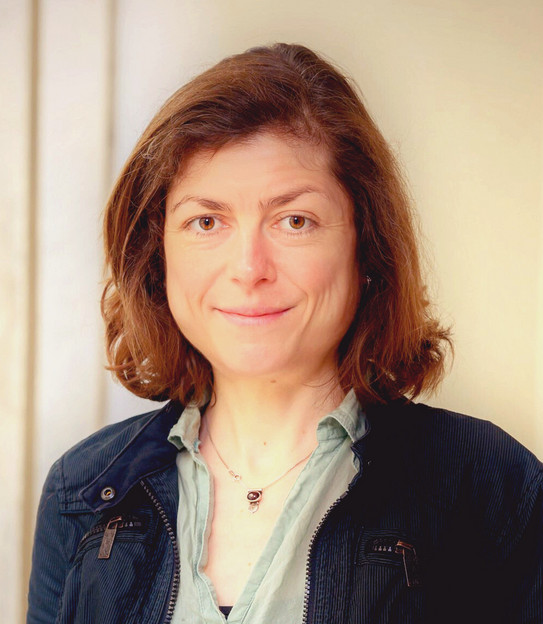
This is an article from mundo, the research magazine of TU Dortmund University.


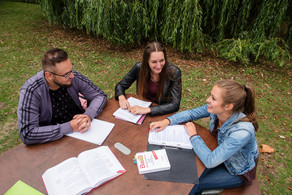
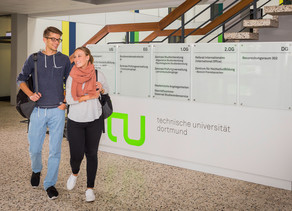
![[Translate to English:] Partner Four hands are holding the green logo of TU Dortmund University](/storages/tu_website/_processed_/1/d/csm_Partner_Nicole_Rechmann_KW_40b35bb3fd.jpg)

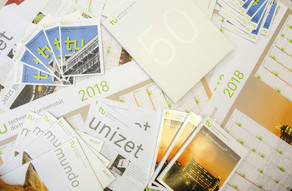


![[Translate to English:] Forschung An apparatus with tubes in a laboratory](/storages/tu_website/_processed_/0/c/csm_Forschung_Juergen_Huhn_cbd34afd6d.jpg)
![[Translate to English:] Studium Five students are sitting in a lecture hall. They are talking to each other.](/storages/tu_website/_processed_/c/9/csm_Studium_FelixSchmale_81d94adc86.jpg)
